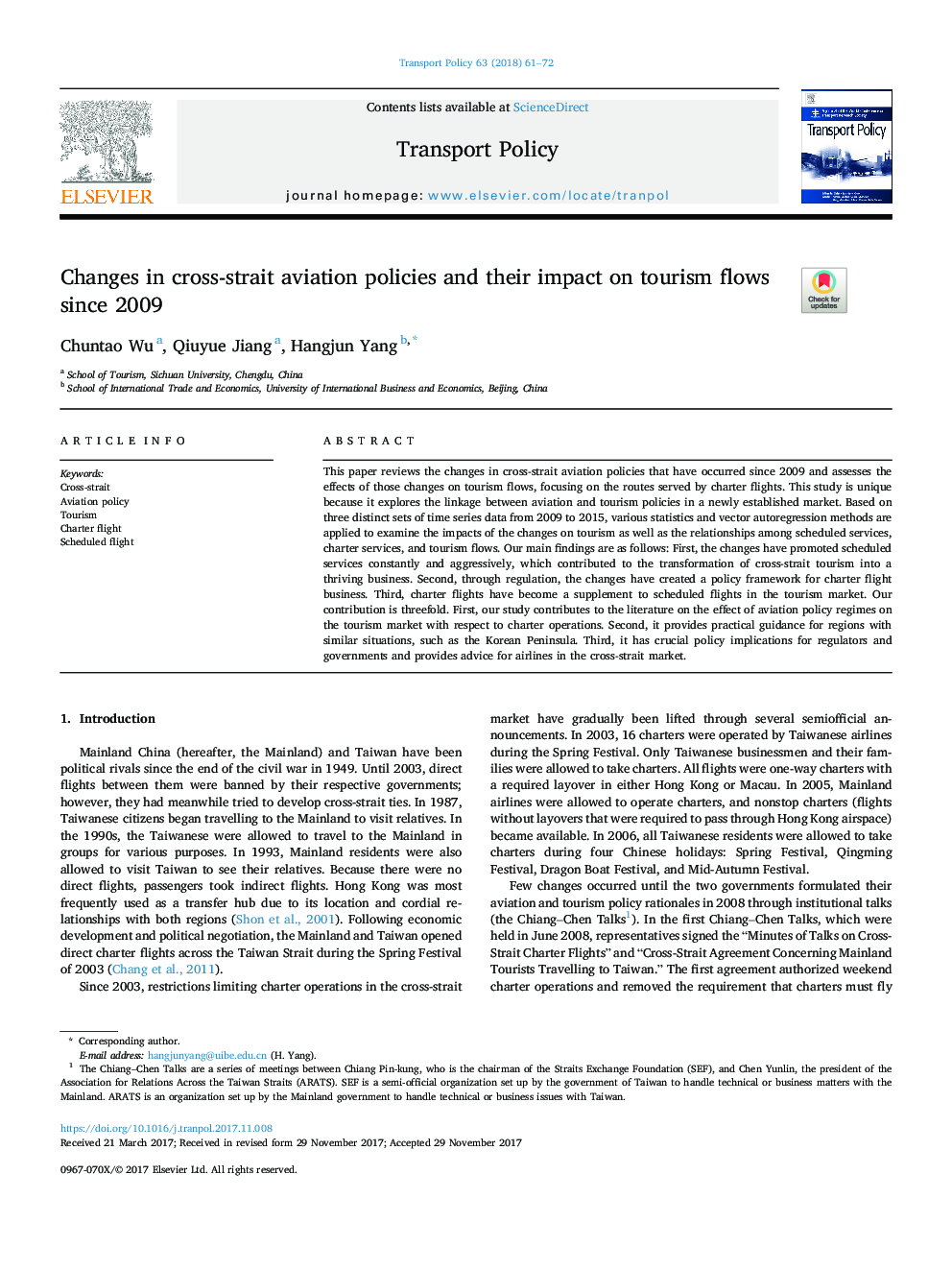| Article ID | Journal | Published Year | Pages | File Type |
|---|---|---|---|---|
| 7497187 | Transport Policy | 2018 | 12 Pages |
Abstract
This paper reviews the changes in cross-strait aviation policies that have occurred since 2009 and assesses the effects of those changes on tourism flows, focusing on the routes served by charter flights. This study is unique because it explores the linkage between aviation and tourism policies in a newly established market. Based on three distinct sets of time series data from 2009 to 2015, various statistics and vector autoregression methods are applied to examine the impacts of the changes on tourism as well as the relationships among scheduled services, charter services, and tourism flows. Our main findings are as follows: First, the changes have promoted scheduled services constantly and aggressively, which contributed to the transformation of cross-strait tourism into a thriving business. Second, through regulation, the changes have created a policy framework for charter flight business. Third, charter flights have become a supplement to scheduled flights in the tourism market. Our contribution is threefold. First, our study contributes to the literature on the effect of aviation policy regimes on the tourism market with respect to charter operations. Second, it provides practical guidance for regions with similar situations, such as the Korean Peninsula. Third, it has crucial policy implications for regulators and governments and provides advice for airlines in the cross-strait market.
Keywords
Related Topics
Social Sciences and Humanities
Social Sciences
Geography, Planning and Development
Authors
Chuntao Wu, Qiuyue Jiang, Hangjun Yang,
